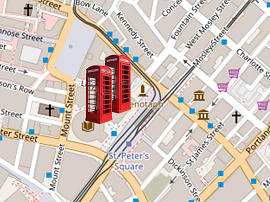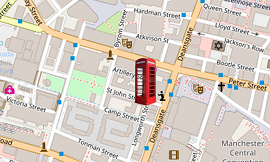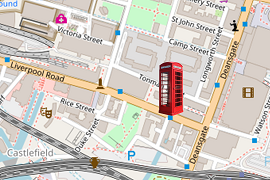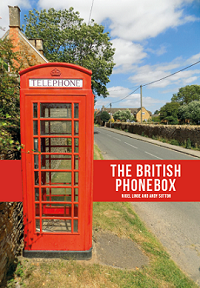Manchester’s Red K6 Phoneboxes
Introduction to the K6 Phonebox (Telephone Kiosk)
When in 1912 the General Post Office (GPO) took over responsibility for most of the UK’s telephone service, they sought to produce a standardised design for public call offices, i.e. telephone kiosks or phoneboxes. By 1935 the GPO had installed nearly 20,000 telephone kiosks but still, ironically, lacked a standard design that could truly be deployed anywhere in the country from the smallest village to largest city. Each version of kiosk design was identified by its ‘K’ number with the first attempt at standardisation resulting in the K1. That design was not well received and so by 1935, there were two dominant designs in use. The K2 was deployed predominantly in London with the K3 being used elsewhere; both of these were designed by the architect, Sir Giles Gilbert Scott. A K4 and K5 design also existed but these were always intended for niche situations.
The problem was that the cast-iron K2 was deemed too big for general use whereas the K3 was more usefully proportioned but, lacked some of the finesse of the K2 and its concrete construction was proving less durable. Therefore, what was needed for the country as a whole was a design that combined the elegance and durability of the K2 with the dimensions of the K3.
Once again Sir Giles Gilbert Scott was approached who consequently produced the GPO’s sixth, hence K6, kiosk launched in celebration of the Silver Jubilee of King George V who ascended to the British throne on 6th May 1910. His Silver Jubilee of 1935, therefore, provided the GPO with a high-profile occasion to celebrate through the launch of a new standard kiosk. Inevitably, the K6 also became known as the Jubilee kiosk. With over 65,000 manufactured, the K6 has become Britain’s ubiquitous and quintessential red phonebox.
Like the K2, the K6 was constructed from cast iron, except for the door which was teak. Its door and adjacent sides were glazed with windows comprising a broad central pane with narrow ones either side organised in eight rows. The domed roof comprises a telephone sign on opaque glass surrounded by simple moulding below which is a slot for ventilation and above it, a moulded Royal crown. From 1935 to 1953 the Tudor Crown was used on all State documents and by all Government departments and hence, on kiosks. However, with the coronation of Queen Elizabeth II in 1953, this was changed to the St Edward’s Crown. From 1955, kiosks installed in Scotland carried a representation of the Crown of Scotland and to accommodate this, kiosks produced from 1955 onwards were cast with slots into which the appropriate crown could be inserted. The crown therefore provides a easy way of dating a kiosk. However, despite a modern trend, crowns were always painted red, never gold!
Four examples of the K6 kiosk survive in Manchester and these are described below. There is however, a fifth example within the Science and Industry Museum who also boast a much rarer 1960s designed K8 kiosk located within their Connecting Manchester gallery. The University of Salford is also the proud custodian of a K6 kiosk located on its Peel Park Campus and outside the Old Fire Station
K6 Pair, Central Library
These two K6 kiosks at St. Peter’s Square, near to the Central Library, nicely illustrate the difference in crowns. The kiosk on the left is a pre-1953, Tudor Crown kiosk, whereas the one on the right is a post-1955, slotted crown version displaying the post-1953 St. Edward’s Crown. The maker plate on the rear of these kiosks show that one was manufactured by the Carron Company, Stirlingshire, whilst the other was manufactured by the Lion Foundry Co Ltd, Kirkintillock.

K6, St John Street
This K6 kiosk located on St. John Street, just off Deansgate, is a pre-1953, Tudor Crown example. The maker plate on the rear of the kiosk confirms that it was manufactured by the Macfarlane, Saracen Foundry in Glasgow.

K6, Liverpool Road
This K6 kiosk, located at the Deansgate end of Liverpool Road, is a pre-1953, Tudor Crown, version. Sadly the maker plate is inaccessible and so it is not yet known where it was manufactured.

If you would like to know more about phoneboxes . . .
Then you might enjoy this book.


Follow on social media .....